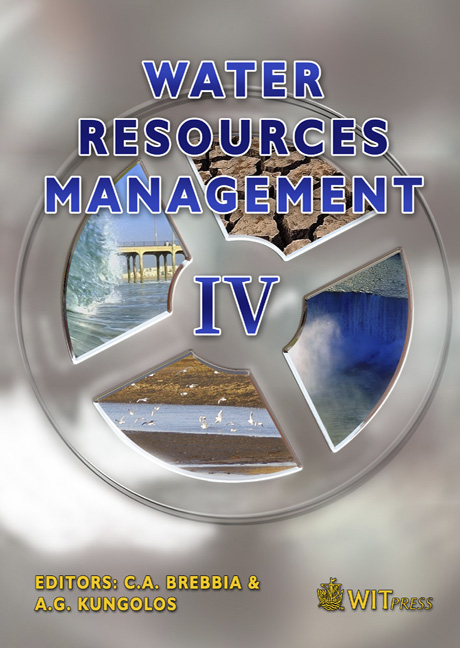Sediment Transport In Sewers
Price
Free (open access)
Transaction
Volume
103
Pages
10
Published
2007
Size
437 kb
Paper DOI
10.2495/WRM070261
Copyright
WIT Press
Author(s)
R. Celestini, G. Silvagni, M. Spizzirri & F. Volpi
Abstract
Solid transport in combined sewers is characterized by a succession of two phenomena: erosion of sediment from the pipe bottom and deposition of solid matter transported by the flow during the sequential phases of a storm wave. The alternation of these phenomena in a combined sewer network causes the deposition of sand and organic material during the time between two successive storm waves. Dry weather flow generally cannot activate near-bed solids transport, so that the sediment remains in sewer trunks until the first storm flow occurs. After long periods of permanence at the sewer pipe bottom, especially during summer, organic material can undergo a process of decomposition. In this case, wet weather flow created by the first storm event often causes erosion and transport of solid material in a decomposed state to the receiving aquatic systems, with the risk of anoxia. This phenomenon is being analysed in two different hydrographic basins in Rome, with on-site monitoring of two combined sewer networks, whose dry weather flow and first storm flow, according to designed dilution ratios, is conveyed to the Roma Nord wastewater treatment plant and whose combined sewer overflow (CSO) spills are received by the river Aniene, one of the main tributaries of the river Tevere. This experimental activity is aimed at both locating, characterizing and quantifying sediment deposits in such sewer networks, and defining a sediment transport model to predict the position of sewer trunks with high probability of deposit and to estimate mean values of sediment volume. Keywords: combined sewerage, sewer sediments, transport model, water quality.
Keywords
combined sewerage, sewer sediments, transport model, water quality.





